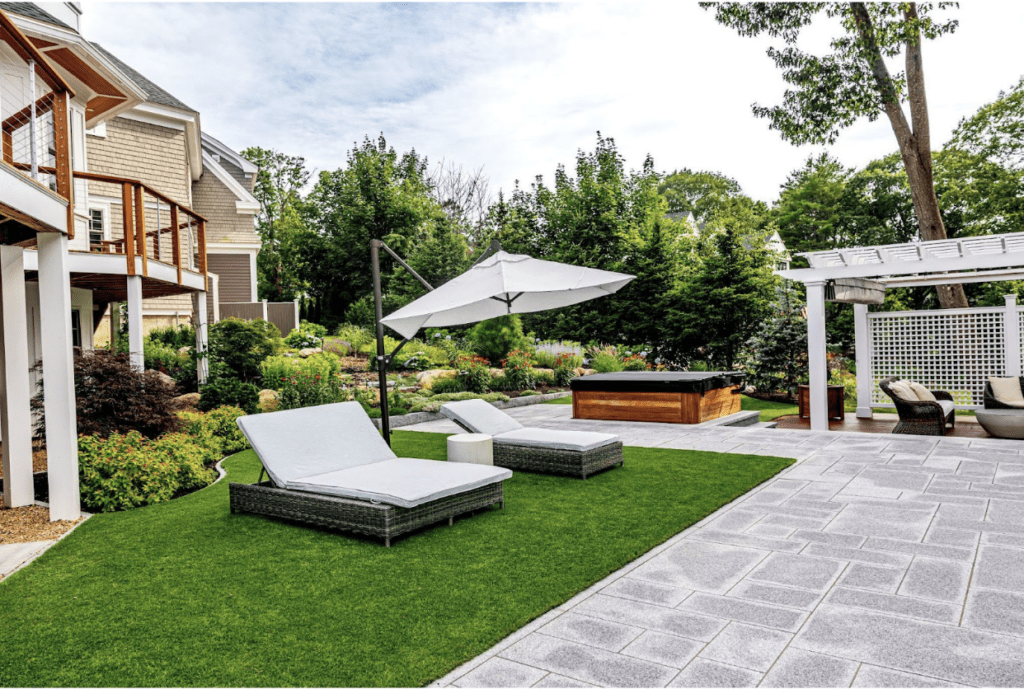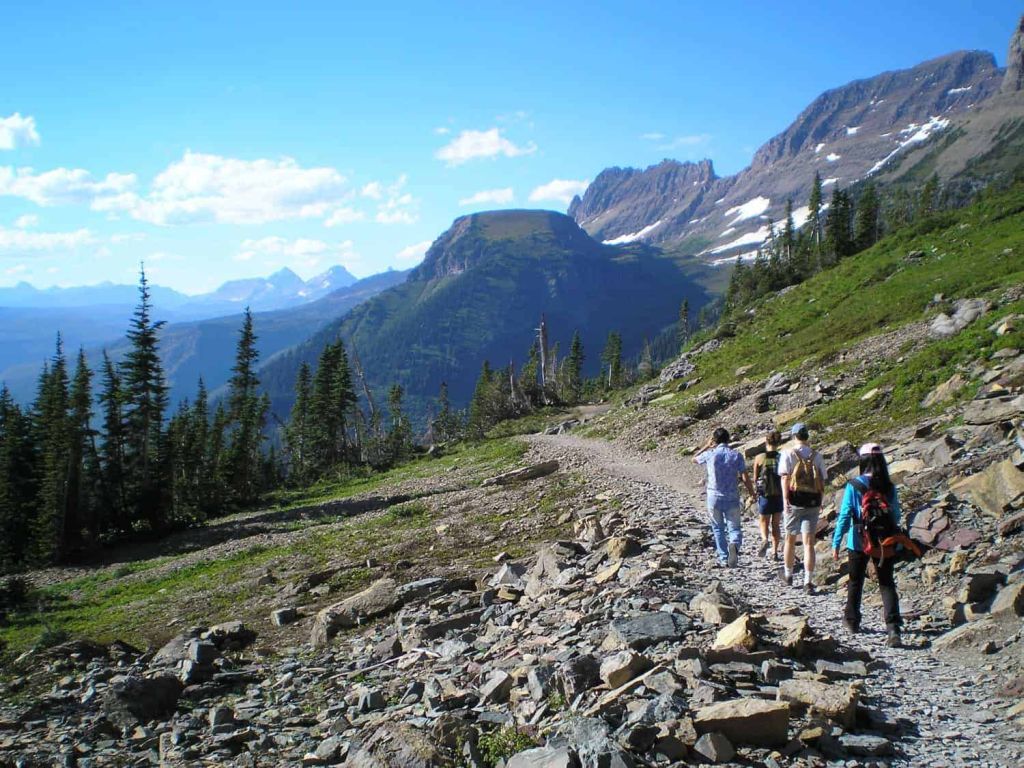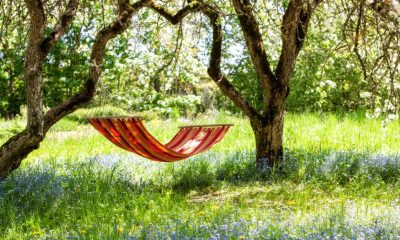Outdoor
Outdoor Adventures to Put on Your Bucket List Now

Outdoor
Top Landscaping Ideas to Enhance Your Backyard

Your backyard is more than just an outdoor space; it’s an extension of your home and a blank canvas for creativity. Whether you dream of a serene retreat, a lively entertainment hub, or a lush garden oasis, the right landscaping ideas can transform your yard into something truly special. From simple upgrades like adding vibrant plants and cozy seating to major changes involving pathways and water features, or even building stone walls to add structure and charm, there’s no shortage of inspiration. This guide will explore top landscaping ideas to help you improve your backyard’s beauty and functionality. Get ready to unlock your outdoor space’s full potential and create a place you’ll love to spend time in!

Creating a Serene Outdoor Retreat with Simple Landscaping Changes
Transforming your backyard into a serene escape doesn’t require grand renovations. Start with plants that promote calm, like ferns, lavender, or ornamental grasses. Arrange them thoughtfully to create natural borders or a layered look for a lush, tranquil atmosphere.
Next, focus on seating. Choose cozy options like cushioned chairs, hanging hammocks, or a simple wooden bench. Position them in shaded areas or spots with a clear view to encourage relaxation.
Lighting is key to setting a peaceful mood, especially in the evening. String fairy lights, hang lanterns, or add solar-powered path lights for a soft, warm glow. These small changes instantly elevate any outdoor space.
Finally, bring in soothing decor. Water features, like a small fountain or birdbath, add gentle sounds. Throw pillows, neutral outdoor rugs, and minimal accents like candles create an inviting yet uncluttered ambiance.
By keeping the design simple and intentional, you’ll create a backyard retreat you’ll love to unwind in after a busy day.
Adding Height and Texture with Trees, Shrubs, and Trellises
Adding height and texture to your backyard design can instantly make it feel more dynamic and visually appealing. Start with trees to establish vertical interest. Opt for smaller varieties like Japanese maples or flowering dogwoods if space is limited. These not only draw the eye upward but also provide shade and seasonal color.
Shrubs are perfect for filling spaces and adding layers. Use hedges to define borders, or choose ornamental shrubs, like hydrangeas or boxwoods, for texture and visual depth. For a natural look, mix shrubs of differing heights to create a lush, tiered effect.
Trellises are fantastic for vertical growth and charm. Use them to support climbing plants like jasmine, wisteria, or even vegetables such as beans. Position trellises against walls, as standalone features, or to frame pathways.
When combined, trees, shrubs, and trellises can redefine your backyard, creating cozy nooks, structured spaces, and eye-catching focal points. With creative choices, these elements enhance functionality and style, making your outdoor area feel complete.
Maximizing Small Backyards with Smart Landscaping Tips
A small backyard can feel expansive with the right landscaping strategies. Start by using vertical spaces to your advantage. Install wall planters, hanging baskets, or trellises with climbing plants to add greenery without sacrificing floor space.
Also try multi-functional furniture, like benches with built-in storage or foldable tables, to make the area both practical and stylish. Zone your backyard creatively by using rugs, potted plants, or small dividers to define spaces, such as a seating area and a green corner.
Choose compact or dwarf plant varieties that thrive in smaller settings while still adding vibrant color and texture. Raised garden beds or tiered planters can also maximize planting potential in limited square footage.
To create a sense of openness, stick to a compatible color palette and arrange paths or furniture in diagonal lines to give the illusion of depth. Mirrors and reflective materials can also amplify the feeling of space.
With smart design and functionality in mind, even the tiniest backyard can become a beautiful, versatile retreat.
Conclusion
Transforming your backyard is simpler than you think. With the right landscaping ideas, any outdoor space can become a stunning sanctuary. From cozy retreats to vibrant gardens, the possibilities are endless. Get creative, take the first step, and start building the backyard you’ve always dreamed of. For more inspiration, explore our full range of outdoor pages to help you turn every corner of your yard into something special. Your oasis awaits!
Outdoor
How Gardening and Vintage Fashion Go Hand in Hand

Gardening and vintage fashion might seem worlds apart at first glance, but look a little closer, and you’ll uncover a shared soul between them. Both celebrate a slower, more thoughtful way of living—one rooted in creativity, sustainability, and an appreciation for timeless beauty. Gardening invites us to nurture life and connect with nature, while vintage fashion brings stories of the past into the present, giving old treasures a brand-new glow. Together, they create a lifestyle that values mindful choices and artistic expression.
Whether you’re digging into the soil or sorting through racks of vintage gems, the joy is in creating something unique and lasting. Welcome to a world where flowers bloom, fabrics flutter, and these two passions grow beautifully hand in hand.
How Gardening Inspires Vintage-Inspired Style
Gardening is a treasure trove of inspiration for vintage-inspired style. The soft pastels of blooming roses, the rich greens of fresh foliage, and earthy tones from the soil all find their way into fashion choices. Think about a sunlit afternoon digging through the garden—it’s the perfect backdrop for wearing plus size vintage t shirts paired with high-waisted denim or a printed maxi skirt. These shirts, often adorned with faded florals or retro graphics, echo the charm of nature’s imperfections.
Gardening’s love for layering textures—like soil, mulch, and blossoms—also translates to fashion. Layer a cozy cardigan over a light scarf, reminiscent of a gardener’s attire, to complete your vintage-inspired outfit. Whether it’s floral prints, earthy colors, or weathered materials, connecting gardening to your wardrobe fuses nostalgia with creativity, allowing your style to blossom as beautifully as your garden.
Styling Outfits Like a Garden Blooms
Styling an outfit can feel as magical as watching a garden come alive. Just like a garden blooms in layers—soil, stems, leaves, and flowers—your outfit can flourish when you layer different textures. Start with a base, like a flowy dress or a vintage t-shirt, and build on it with cozy cardigans, lightweight scarves, or statement jackets as the “petals” of your look. Mixing patterns, like floral prints or earthy stripes, mirrors the vibrant diversity found in a thriving garden.

Don’t shy away from bold colors, either—think sunflower yellows, rose reds, or leafy greens to bring your ensemble to life. Accessories, like vintage-inspired jewelry or a straw hat, become the pollinators that tie everything together. By letting nature guide your choices, you can create outfits that bloom with personality and charm, just like the garden you nurture.
Practical Tips for Mixing Gardening and Vintage Finds
Gardening and vintage finds make the perfect pair when you’re looking to mix charm with practicality. Start by using vintage tools—old watering cans or wooden-handled trowels bring rustic elegance to your daily gardening. Repurpose vintage containers, like tin washbasins or antique teacups, as unique plant pots to give your greenery an extra story. If you’re feeling creative, consider wrapping vintage t-shirts around old pots to create quirky fabric planters. For your gardening attire, blend function with style by wearing vintage-inspired overalls or a retro apron paired with sturdy boots.
Don’t forget accessories like a wide-brimmed hat or a floral silk scarf to protect you from the sun while adding a classic touch. Bringing vintage finds into your gardening not only reduces waste but also lets your personality shine through in both your outfit and your garden space. It’s all about making eco-consciousness look beautiful!
How to Host a Garden Party with Vintage Flair
A garden party with vintage flair is the perfect way to celebrate the timeless beauty of nature and retro aesthetics. Start by setting the scene with vintage tableware—think mismatched china, antique silverware, and embroidered tablecloths. Add floral arrangements in old glass jars, teapots, or vintage vases to create centerpiece magic. Lighting is key for ambiance, so drape string lights or hang lanterns to create a cozy glow as the sun sets.
Encourage your guests to dress in retro-inspired outfits that reflect garden colors, like pastel dresses or vintage t-shirts paired with skirts or linen pants. Don’t forget to set up a comfortable seating area using picnic blankets, wooden chairs, or even hay bales for a rustic touch.
Offer a menu of refreshing, garden-inspired treats—herb-infused lemonades, floral cakes, and finger sandwiches plated beautifully on vintage stands. Add an activity like flower arranging or a mini herb-planting station for guests to enjoy a hands-on connection to nature.
A garden party with vintage vibes is more than just an event; it’s a joyful celebration of creativity and sustainability. By blending gardening and vintage elements, you’ll craft a memorable gathering filled with warmth and charm. Now’s the time to invite friends, soak in the beauty of your garden, and toast to the enduring appeal of timeless style.
Outdoor
Best Supplements for Hiking or Walking

Let me guess, you’re getting ready to go hiking, you’ve picked all the stuff that you need for today. But you never asked yourself, is your body ready for today’s hike? What nutrients are needed for hiking ? And what supplements do hikers use ? When we talk about supplement, many people have different opinions about them. For example, there are many nutritional experts who state that there’s a pill to pop for every issue our body has, and there are also others who claim that they are a waste of money, and will do harm to our body.
But if you would to ask me, i would say that i’m somewhere between those 2 groups of people. And yes food is much more important and safer than taking some supplements, but when we talk about hiking, us hikers would lie if we told you that we don’t need supplements. Because of that, i decided to create a list where i sorted out the best supplements for hiking. These are the supplements that i personally use, and i have to be honest with you, they do really help me to succeed in my hiking goals, they make it easier. I’ve listed out various types of supplements that will be a game changer for you.
Electrolytes
When we hike, we start to sweat a lot, and that can lead to electrolyte imbalance. Electrolytes are crucial to help to balance the amount of water in our bodies. The main electrolytes in our bodies are sodium, potassium, calcium and magnesium, and they play very important roles in bodily functions that involve your heart, nerves and muscles.When your electrolyte levels go down, you will feel fatigued, which is going to make it harder for you to continue the hike. One of the best ways to supplement with electrolytes is to buy it powdered and add it to your water before your hike.

Fish Oils
Hills can over time really make you tired, and they cause a lot of stress on our muscles and joints. It is obviously bad, because it will cause pain and inflammation, and most people try to counter this by using medications like ibuprofen. This can’t help you long-term, but avoiding it is the best thing you can do. Fish oils have omega 3 acids, which contain anti-inflammatory effects that can help you to subside pain and discomfort. Fish oils are supplemented in simple once a day soft gel pills.
Peptides
There are some peptides like CJC-1295 and Ipamorelin which can improve your stamina and energy levels by stimulating growth hormone production, potentially allowing you to make progress in your hiking goals. You can buy peptides from various online stores, and peptide shop offers high quality peptides. There are also peptides like BPC-157 which will strengthen your tendons and ligaments, and we all know how important that is to us hikers.
Protein Powder
Even though protein powders are mostly mentioned in bodybuilding world, and not in hiking world, however even for us hikers, there are benefits from using this supplement. Protein is needed for muscle recovery after a demanding day in the mountains. So try it for yourself, before going hiking quickly drink a simple serving of whey protein. This will give you all the essential amino acids that are needed for muscle growth and repair, and whey protein is the most popular choice.
Conclusion
Preparing your body for hiking with the right supplements can make a real difference in your endurance, recovery, and overall hiking experience. While food should always be the primary source of nutrients, supplements like electrolytes, fish oils, peptides, and protein powder can give you that extra support, helping you handle the physical demands of hiking with less fatigue and pain.
-

 Gardening1 year ago
Gardening1 year agoFall is the Best Time To Plant Shade Trees
-

 Food and Cooking1 year ago
Food and Cooking1 year agoCooking for Special Diets
-

 Gardening1 year ago
Gardening1 year agoThe Regal Prince Oak: A Superior Columnar Choice
-

 Food and Cooking1 year ago
Food and Cooking1 year agoThe Allure of Korean Evodia: A Gardener’s Delight
-

 Gardening1 year ago
Gardening1 year agoGuide to Growing and Enjoying Herb Gardens: History, Cultivation, and Practical Tips
-

 Food and Cooking1 year ago
Food and Cooking1 year agoBest Food for Hot Summer Days
-

 Food and Cooking1 year ago
Food and Cooking1 year agoJourney Through Global Flavors
-

 Gardening1 year ago
Gardening1 year agoTop Dressing Your Lawn: How to Level Uneven Terrain




